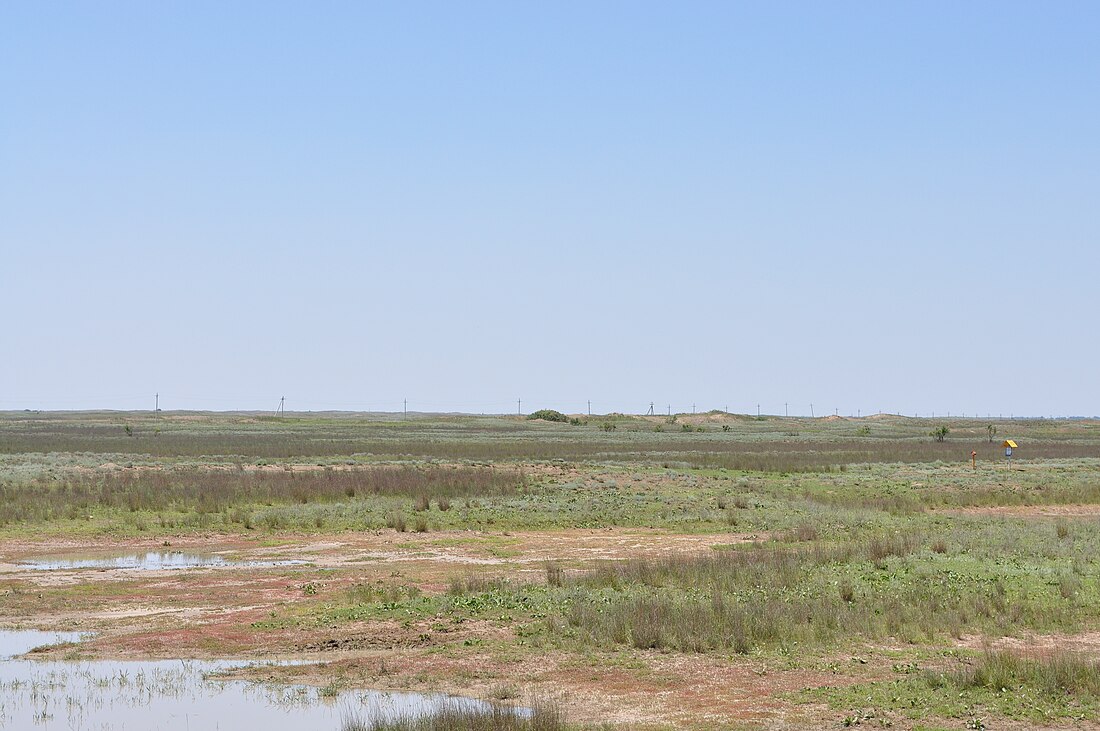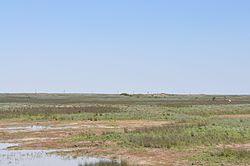Top Qs
Timeline
Chat
Perspective
Nogaysky District, Dagestan
District in Republic of Dagestan, Russia From Wikipedia, the free encyclopedia
Remove ads
Nogaysky District (Russian: Нога́йский райо́н; Nogai: Ногай районы, Nogay rayonı) is an administrative[1] and municipal[5] district (raion), one of the forty-one in the Republic of Dagestan, Russia. It is named after the members of the Karanogay or Qara-Nogai ethnicity who live in the district. Nogaysky District is located in the north of Dagestan. The area of the district is 9,000 square kilometers (3,500 sq mi).[2] Its administrative center is the rural locality (a selo) of Terekli-Mekteb.[1] As of the 2010 Census, the total population of the district was 22,472, with the population of Terekli-Mekteb accounting for 35.6% of that number.[3]
The raion is roughly rectangular and lies at the northwest corner of Dagestan. Although most of Dagestan is mountainous, the raion is mostly dry steppe. On the east the Tarumovsky District separates it from the Caspian Sea. To the south is Chechnya, to the west is Stavropol Krai and to the north is Kalmykia. By the 2010 census the population was 22,472, of which 87.0% were Nogais, 8.1% Dargins, 1.0% Russians, 0.9% Chechens, 0.5% Kazakhs, 0.4% Kumyks, 0.2% Tatars, 0.2% Avars, 0.1% Laks and 0.1% Kabardians. The same census reported 103,660 Nogais in the Russian federation. These are the remnants of the once-great Nogai Horde. It was founded in 1928, transferred to Stavropol Krai in 1938 and returned to Dagestan in 1957. In 1966 the name was changed from Karanogai to Nogai.
Remove ads
Administrative and municipal status
Within the framework of administrative divisions, Nogaysky District is one of the forty-one in the Republic of Dagestan.[1] The district is divided into five selsoviets which comprise seventeen rural localities.[4] As a municipal division, the district is incorporated as Nogaysky Municipal District.[5] Its five selsoviets are incorporated as ten rural settlements within the municipal district.[5] The selo of Terekli-Mekteb serves as the administrative center of both the administrative[1] and municipal[10] district.
Remove ads
References
Wikiwand - on
Seamless Wikipedia browsing. On steroids.
Remove ads



